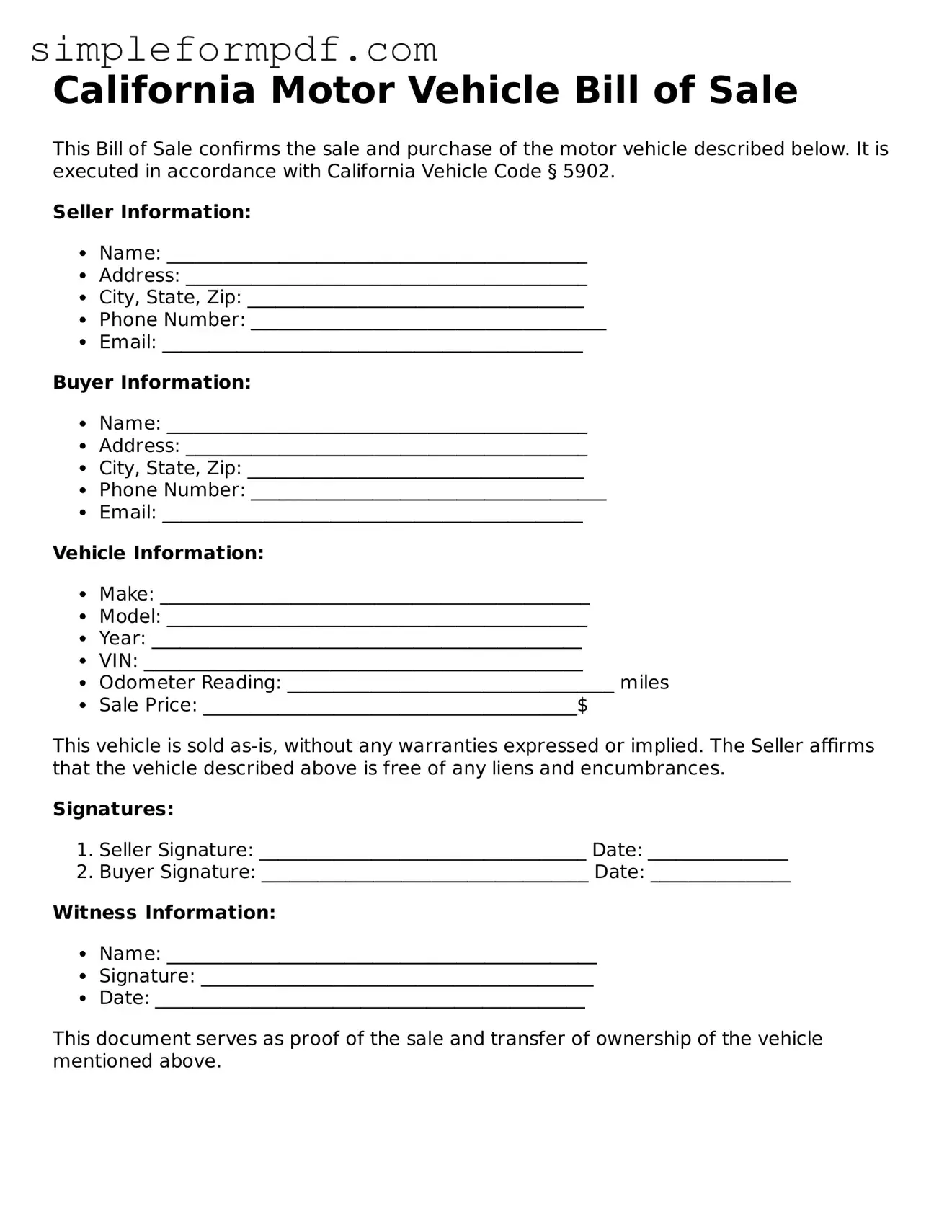California Motor Vehicle Bill of Sale
This Bill of Sale confirms the sale and purchase of the motor vehicle described below. It is executed in accordance with California Vehicle Code § 5902.
Seller Information:
- Name: _____________________________________________
- Address: ___________________________________________
- City, State, Zip: ____________________________________
- Phone Number: ______________________________________
- Email: _____________________________________________
Buyer Information:
- Name: _____________________________________________
- Address: ___________________________________________
- City, State, Zip: ____________________________________
- Phone Number: ______________________________________
- Email: _____________________________________________
Vehicle Information:
- Make: ______________________________________________
- Model: _____________________________________________
- Year: ______________________________________________
- VIN: _______________________________________________
- Odometer Reading: ___________________________________ miles
- Sale Price: ________________________________________$
This vehicle is sold as-is, without any warranties expressed or implied. The Seller affirms that the vehicle described above is free of any liens and encumbrances.
Signatures:
- Seller Signature: ___________________________________ Date: _______________
- Buyer Signature: ___________________________________ Date: _______________
Witness Information:
- Name: ______________________________________________
- Signature: __________________________________________
- Date: ______________________________________________
This document serves as proof of the sale and transfer of ownership of the vehicle mentioned above.
